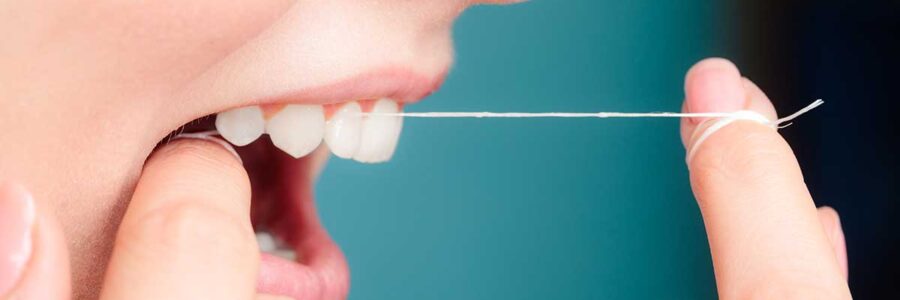Flossing is a vital part of oral hygiene, but did you know that many popular dental floss brands could be exposing you to harmful toxins? Conventional floss often contains materials and chemicals that can impact your health at a cellular level, contributing to inflammation, hormone disruption, and even long-term disease risks.
At Cell Health News, we’re committed to sharing actionable information to help you minimize toxin exposure and support your health. Here’s what you need to know about conventional floss and the safer alternatives available.
The Toxic Ingredients in Conventional Dental Floss
1. Teflon and PFAS Chemicals
Teflon (polytetrafluoroethylene or PTFE) is commonly used in dental floss to create a smooth, easy-glide texture. However, it belongs to a group of chemicals called PFAS, which are often referred to as “forever chemicals” because they accumulate in the body over time.
Studies have shown that frequent use of Teflon-based floss, such as Oral-B Glide, correlates with higher levels of PFAS in the bloodstream. PFAS are linked to:[1]
- Hormone disruption
- Immune system suppression
- Liver and kidney damage
- Increased cancer risk
These chemicals disrupt cellular processes, particularly those involved in detoxification and hormone signaling.
2. Synthetic Microplastics
Nylon and polyester are common materials used in non-Teflon floss. While these don’t contain PFAS, they can still shed microplastics during flossing. Over time, microplastic exposure has been associated with systemic inflammation and potential endocrine disruption.[2]
3. Petroleum Coatings
Petroleum-based wax is often used to coat dental floss, adding yet another layer of chemical exposure. These coatings can contribute to inflammation and place additional strain on the liver’s detoxification pathways.[3]
4. Synthetic Fragrances
Flavored floss often contains synthetic fragrances derived from phthalates, known endocrine disruptors. Daily exposure can lead to hormone imbalances and other health concerns over time.[4]
How These Toxins Affect Your Cells
Your cells rely on clear communication, proper detoxification, and a balanced environment to function optimally. The toxins in conventional floss disrupt these processes by:
- Increasing oxidative stress
- Burdening the liver and kidneys
- Interfering with hormone regulation
- Slowing down cellular repair and regeneration
Switching to non-toxic floss is a simple way to reduce this daily exposure and support cellular health.
Choosing Safer Floss for Better Health
When shopping for floss, prioritize options made with natural, biodegradable materials and free of synthetic coatings and fragrances. Look for:
- Silk or Bamboo Floss: These natural materials don’t release microplastics and are fully biodegradable.
- Beeswax or Candelilla Wax Coating: Natural waxes make floss glide smoothly without adding toxins.
- Essential Oil Flavors: Natural peppermint, spearmint, or tea tree oil provide flavor and antimicrobial benefits.
- Plastic-Free Packaging: Glass or cardboard containers minimize environmental impact while avoiding plastic contamination.
Recommended Brands
- Dental Lace: Biodegradable silk floss with a natural beeswax coating in refillable glass containers.
- TreeBird Floss: Vegan-friendly bamboo floss coated with candelilla wax.
- Radius Organic Silk Floss: Made from silk and infused with organic coconut oil.
- Dr. Tung’s Smart Floss: Free from petroleum and Teflon, with a plant-based wax coating.
Final Thoughts
Flossing is essential for oral hygiene, but it doesn’t have to cost your overall health. By switching to non-toxic floss, you can protect your body from harmful chemicals while still maintaining a healthy smile.
Every small change—like swapping out your dental floss—contributes to a healthier, toxin-free life. Choose safer alternatives and give your body the care it deserves, one step at a time.
References:
- Boronow, Katherine E., et al. “Serum Concentrations of PFASs and Exposure-Related Behaviors in African American and Non-Hispanic White Women.” Journal of Exposure Science & Environmental Epidemiology, vol. 29, no. 2, 2019, pp. 206–17.
- Campanale, Claudia, et al. “A Detailed Review Study on Potential Effects of Microplastics and Additives of Concern on Human Health.” International Journal of Environmental Research and Public Health, vol. 17, no. 4, Feb. 2020, p. 1212.
- Kassotis, Christopher D., et al. “Endocrine-Disrupting Chemicals and Oil and Natural Gas Operations: Potential Environmental Contamination and Recommendations to Assess Complex Environmental Mixtures.” Environmental Health Perspectives, vol. 124, no. 3, Mar. 2016, pp. 256–64.
Wang, Yufei, and Haifeng Qian. “Phthalates and Their Impacts on Human Health.” Healthcare, vol. 9, no. 5, May 2021, p. 603.


